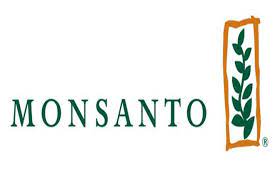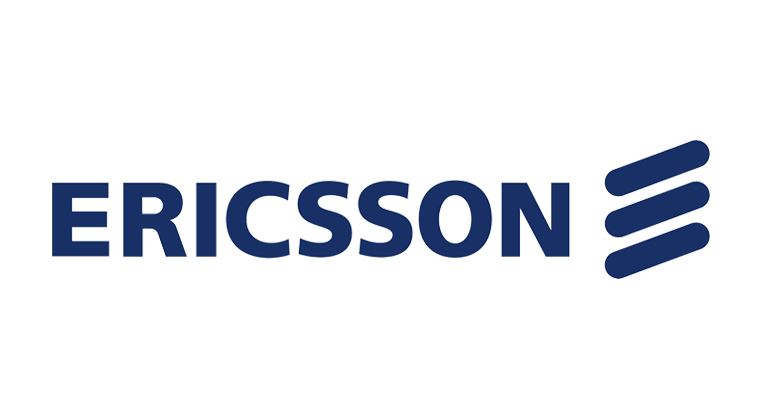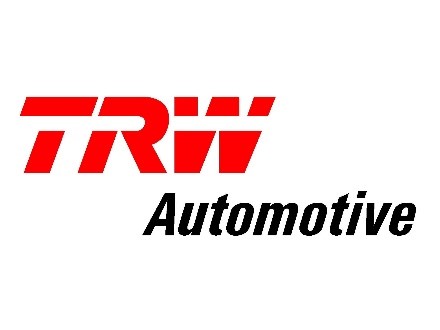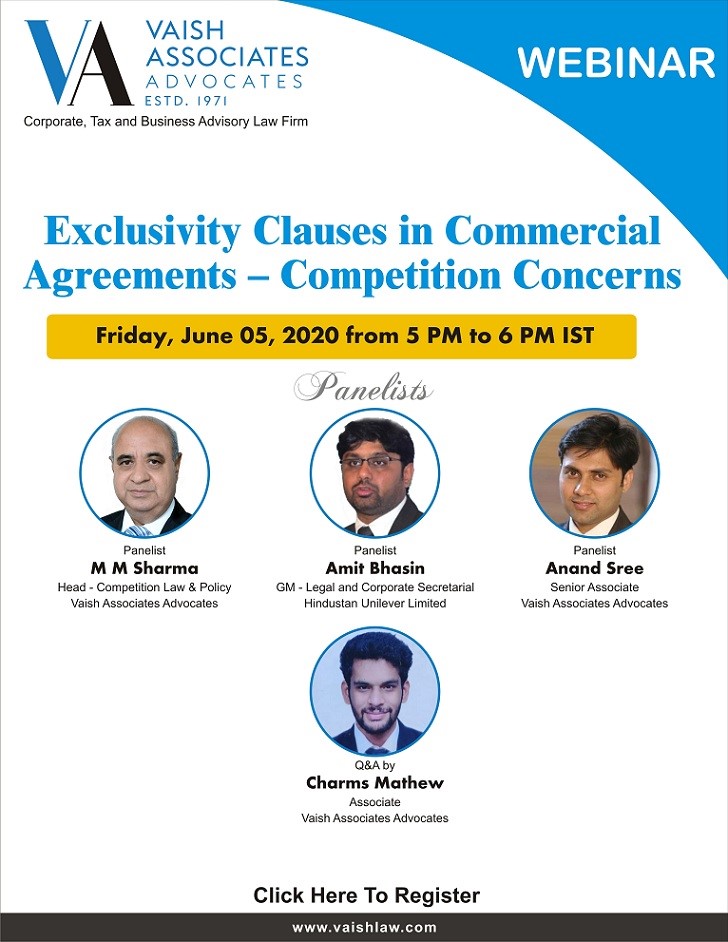

The Division Bench of the Delhi High Court, vide its judgment dated July 13, 2023 in Telefonaktiebolaget Lm Ericsson (PUBL) vs. CCI has revived the old debate for jurisdictional issue between the Controller of Patents and the Fair Market Watchdog, the Competition Commission of India (CCI) for determination of the FRAND terms for grant of license of SEPs to Smartphone makers by holding that , it is the former ( Controller of Patents) which shall decide the moot issue .
The clash of jurisdiction in India between (i) sector specific regulators such as Telecom Regulatory Authority of India (TRAI) , Insurance Regulatory and Development Authority (IRDA) etc and the fair market watchdog , the Competition Commission of India (CCI) and , (ii) the old debate on Intellectual Property Law Vs Competition Law in general and the one , relating to the grant of license for the Standard Essential Patents (SEPs) on FRAND Terms to the Smartphone makers , in particular , has been an evergreen source of litigation between the parties in India and around the Globe and has been reported in this blog . Writ jurisdictions of high courts has been invoked by parties to resolve the moot issues repeatedly in India.
The first issue on jurisdiction between sector specific regulators in the Telecom Sector, the TRAI/TDSAT and CCI, was hopefully resolved by the Supreme Court in the Bharti Airtel 2018 judgement by upholding the jurisdiction of TRAI to decide the specific dispute on interconnection charges first . But the issue flared up twice, first in 2019 , when the Bombay High Court set aside a CCI prima facie order directing investigation against SONY TV and STAR TV and again in 2022 , when the same Bombay High Court set aside another CCI prima facie order directing investigation against STAR TV . Notably in both cases, the Bombay High Court relied upon the Apex Court Bharti Airtel 2018 judgment. However, both these judgments of Bombay High Court have been challenged by the CCI and the appeals are pending in the Supreme Court of India. So, this issue is still res integra in India.
On the second issue I would like to elaborate a little for the sake of my readers who may not be familiar with it. The issue pertains to the old debate between IPRs, which grant a statutory monopoly and the competition law, which is against monopolisation. To be precise, the issue is as to which authority will decide the reasonableness of the terms, including the amount of royalties, to be paid by Smartphone makers, to the owners of the Standard Essential Patents, which are essential for the operation of the key features of the Smartphone. The following note is for setting the background.
Smartphone patent wars in India – Cooperative standard setting system i.e., setting up of ‘Standard Essential Patents’ (SEPs) by international ‘Standard Setting Organization’s (“SSO”) by choosing the best patent from amongst multiple available patents for a common technology (e.g. Wi-fi, 2G, 3G, 4G, Bluetooth, USB, jpeg, NFS, GPS, memory etc. used in Smartphones ) closes the competition amongst the patent developers after acceptance of a bundle of patents as an SEP. Once so chosen, the patents become ‘standard’ or ‘essential’ and once such standards achieve commercial acceptance, compliance with the standards becomes a matter of commercial necessity thereby creating a ‘locked-in’ effect for the standard implementers wanting to use these standards in manufacturing smartphones locally. This inevitably attracts scrutiny of competition law as the owners of such SEPs (generally older technology giants such as Ericsson, Motorola, Nokia etc.) or ‘standard developers” can prevent the ‘standard implementers” or users of the SEPs from getting access to them either by completely denying licensing (known as ‘patent hold-ups’) or by charging excessive royalties for the same. This way the standardization setting system in the telecom sector leads to anti-competitive results, mostly by the standard developers through patent hold-ups i.e., exploitation of the locked-in position of standard implementers. In the same context, the standard implementers, also by coordinating with each other, can engage in conduct that aims to drive royalties for standards down to below fair terms through what is popularly known as patent holdouts. This can force standard developers to license the standards at less than ‘fair market value’ through expensive litigations. Similarly, the standard implementers by filing complaints of abuse of dominant position by standard developers before competition authorities can force them to not only grant the license but also to bring down the royalties to reasonable values. This phenomenon popularly known as ‘smartphone patent wars’ is going on throughout the world between traditional standard developers such as Nokia, Motorola, Ericsson and new emerging standard implementors such as Apple, Samsung (globally) and Oppo, Vivo, OnePlus, Realme (China) has also arrived in India in the form of on-going litigations between Ericsson and Indian mobile makers such as Intex, Micromax etc.
In this context, the SSOs’ have developed FRAND (Fair Reasonable and Non-Discriminatory) commitments to prevent holders of patents on standardized technologies from exploiting the unearned market power that they otherwise would gain because of the broad adoption of a standard. FRAND commitments ensure that royalties and other terms in SEP licenses will be fair, reasonable, and non-discriminatory. The FRAND commitment is an industry-devised solution to prevent holders of standard essential patents (SEPs) from exploiting standard implementers.
Consequently, the following issues emerged for consideration before CCI in complaints filed by two Indian Smartphone makers, Intex and Micromax in 2014:
- Whether CCI can determine the ‘reasonableness’ of the royalty rates in a complaint filed by smartphone makers against standard developers under S.4 of the Act on grounds of ‘fair’ price or it is the prerogative of the Controller of Patents to determine the fairness of royalty under S. 11A of the Patents Act, 1970?
- Whether the charging of royalty based on sale price of the mobile phone can be considered as arbitrary because smartphone includes SEPs of other standard developers as well?
- Whether the linkage of royalty for the technology/SEP to the price of the smartphone is justified considering that there is no other value addition with the increase of price of the smartphone?
CCI directed an investigation by the Director General which order was challenged by Ericsson in Delhi High Court on grounds of lack of jurisdiction. The Delhi High Court vide its judgment dated 30 March 2016 in the case titled Telefonaktiabolaget LM Ericsson (Ericsson) v CCI and Anr[1] ( “2016 judgment” ) held that the jurisdiction of CCI under the Act to probe allegations of anti-competitive practices and abuse of dominance arising out of the monopoly granted by patent rights cannot be taken away even if the Patents Act, 1970 provides for efficacious remedies inter alia in the nature of grant of compulsory licenses. This decision of 30 March 2016 (by the Single Bench of the Delhi High Court (Justice Vibhu Bhakru), was challenged by Ericsson by filing a Letter Patent Appeal (LPA) before the Division Bench (DB) of the Delhi High Court.
The Division Bench of the Delhi High Court, vide its judgment dated July 13, 2023 in Telefonaktiebolaget Lm Ericsson (PUBL) vs. CCI ( “2023 Judgment”) has revived the above debate for jurisdictional issue between the sector specific regulator and the CCI.
Those wishing to read further on the role of writ courts in resolving the jurisdictional debates on the above issues , may like to read my earlier blog here .
Ericsson filed LPA 246/2016 and LPA 247/2016 challenging he above 2016 Judgement, against CCI, Micromax, and Intex. Additionally, CCI filed LPA 550/2016 in response to the 2015 Judgement, which was a writ petition filed by Ericsson against CCI and iBall. Furthermore, Ericsson also filed W.P.(C) 8379/2015 against CCI, challenging notices issued by CCI based on allegations of Ericsson not adhering to fair, reasonable, and non-discriminatory practices in relation to SEPs. Further, Monsanto also filed LPA/150/2020 on similar issues .
LPA 550/2016 filed by CCI
The iball had also complained to the CCI raising similar allegations to Micromax and Intex against Ericsson. The CCI took prima facie view and invited Director General (“DG”) for the investigation. Ericsson approached the Hon’ble Delhi High Court and the Hon’ble High Court on December 14, 2015, taking into consideration of a settlement between Ericsson and iBall, wherein iball expressed its intent to withdraw its previously submitted information. Consequently, iBall sought the disposal of the petition, effectively putting an end to the proceedings initiated by the under section 26(1) of the Competition Act. The Hon’ble Court ordered the CCI to close the investigation initiated against Ericsson. Therefore, in response to the judgement dated December 14, 2015, CCI filed LPA 550/2016.
LPA/150/2020 filed by Monsanto.
The informants approached the CCI raising similar allegations as with that against Ericsson. The contention of the informants against Monsanto was that Monsanto is charging excessive royalties and not making its patents available reasonably, which is a violation of sections 3 and/or 4 of the Competition Act. Pursuant to which Monsanto approached the Hon’ble Delhi High Court, the Hon’ble Court extensively relying upon its abovementioned 2016 judgement and dismissed the writ petition, vide its judgment dated May 20, 2020 holding that there is no bar in law to the CCI proceeding against Monsanto under the Competition Act for alleged violation of sections 3 or 4 thereof, on the basis of information filed by the informants. In this judgment, the Delhi High Court reemphasized that there is no irreconcilable repugnancy between the Patent Act, 1970 (“Patent Act”) and the Competition Act, 2002. Interestingly, the Court also construed Section 3(5) of the Competition Act, 2002 by clarifying that Section 3(5) of the Competition Act, 2002 (“the Competition Act”) is not a blanket restriction, and, therefore, unreasonable conditions could not be imposed by an IPR holder under the garb of protecting its rights. Therefore, in response to the said judgement dated May 20, 2020, Monsanto filed LPA/150/2020.
2023 Judgment
Issues Raised
Multiple legal issues arose for consideration of the High Court, which went into all the relevant provisions of both the Patent Act, relating, mainly to the grant of compulsory license in public interest as well as the Competition Act, relating to the protection provided to, inter alia, the patent holders (“patentees”), under the Competition Act. However, for sake of brevity, I have suitably modified the language of the most relevant of these issues, considered by the Court, as under:
Whether the 2003 amendment in the Patent Act ( relating to grant of compulsory license under Chapter XVI) makes the Patent Act override the provisions of Competition Act ?
Which is the competent authority to determine whether the terms of license agreement of a patent will cause an appreciable adverse effect on competition within India – the CCI under the Competition Act, or the Controller of patents under the Patent Act?
Which is the competent authority to determine “reasonable conditions” for licensing a Patent to a wiling licensee-that is, whether the CCI only competent to determine the “reasonableness” of the conditions, including the rate of royalty and other renumeration for grant of license, under Section 3(5) of the Competition Act or Controller of Patents under Section 84(1) read with Section 84(4) and Section 90 of the Patent Act?
Let us see the contentions of each party and the observations of the High Court on each of the above issues.
Issue 1. Whether the 2003 Amendment in the Patent Act (relating to grant of compulsory license under Chapter XVI) makes Patent Act override the provision of the Competition Act?
Contentions of the Patentees
The Patentees, inter-alia submitted that the Chapter XVI of the Patents Act, which was introduced by way of an amendment in 2003, after the Competition Act was enacted, makes Patent Act a subsequent enactment, and that by application of the maxim lex posterior derogat priori, the Patents Act must override the Competition Act.
Contention of the CCI
The CCI submitted that based on the Aspects Doctrine[2], the mere overlap between the Patents Act and the Competition Act does not detract from the power that is vested with the CCI under the Competition Act. Further, CCI contended that the Competition Act serves as a specialized legal framework specifically tailored to address anticompetitive agreements and instances of dominant position abuse. Therefore, a few isolated provisions within the Patents Act, which primarily addresses patents in a broader sense, should not be interpreted as superseding the overarching authority of the Competition Act
Observation by the court
The Hon’ble High Court, drawing from the precedents set by the Hon’ble Supreme Court in three landmark cases[3], noted that when determining the overriding effect of two special laws, certain factors must be taken into account: (i) the subject matter in question, (ii) the intention of the statutes in respect thereof, and (iii) whether the scheme and pertinent provisions of the two statutes suggest any indication apropos which, the legislature felt must override the other, especially, when both statutes contain a non-obstante clause.
After a detailed comparative analysis of the relevant provisions of the Patent Act[4] and the Competition Act[5] , the Hon’ble Court observed that the inquiry that the CCI proposes to conduct regarding assertion of patent rights is nearly identical to the examination that the Controller of Patents will conduct under Chapter XVI of the Patents Act. The Hon’ble Court observed that the legislative intent becomes apparent, especially in the context of patents, through the Patents Act, particularly as amended by the 2003 Amendment that introduced Chapter XVI after the enactment of the Competition Act. This legislative framework is designed specifically for matters related to patents, including assessments of unreasonable conditions in licensing agreements, addressing abuses of patentee status, conducting inquiries in such cases, and determining the relief to be granted. On the contrary, the Competition Act serves as a broader legislative framework, primarily addressing anti-competitive agreements and instances of dominant position abuse across various sectors. The incorporation of Section 84(6)(iv) into the Patents Act via the 2003 amendment came after the enactment of the Competition Act, especially in conjunction with Section 3(5)(i)(b) of the Competition Act that provides a clear indication of the legislative intent regarding anti-competitive agreements, with regards to licensing of patents. Therefore, the Hon’ble High Court, after a comprehensive consideration of the purpose, policy, and language of the relevant provisions of both enactments, concluded that the Patents Act should rightfully take precedence over the Competition Act in matters pertaining to patents.
Issue 2- Which is the competent authority to determine whether the terms of license agreement of a patent will cause an appreciable adverse effect on competition within India – the CCI under the Competition Act, or the Controller of patents under the Patent Act?
Contentions of the Patentees
The stand of the patentees has been that the Patents Act is a special law dealing specifically with patents, and issues of imposition of conditions for licensing patents are provided for under Chapter XVI of the Patents Act, which includes anti-competitive agreements and abuse of dominant position explicitly. They contend that in view thereof, there is no reason for the Competition Act, which deals with anti-competitive agreements and abuse of dominant position generally, to override the special law.
Contention of the CCI
The CCI submitted that Section 19(1) empowers the CCI to inquire into allegations of violations of Sections 3 or 4. Further, the CCI submitted that the Section 19(2) clarifies that the power under Section 19(1) includes the powers and functions under Sections 19(3) to 19(7), which broadly require the Commission to: a) determine whether an agreement will have an appreciable adverse effect on competition, and in such process, have due regard to factors specified in Section 19(3). Defending the 2016 Judgement of the single bench, the CCI contended that the provisions of Section 3(5)(i)(b) and Section 4 of the Competition Act make it abundantly clear that the CCI, and that only the CCI can consider whether a condition imposed in an agreement licensing a patent is unreasonable, i.e., such as would cause an appreciable adverse effect on competition within India, or an abuse of dominant position.
Observations by the Court
The Hon’ble High Court observed that factors that the CCI is required to consider under Sections 19(3) and 19(4) when assessing a potential violation of Sections 3 or 4 of the Competition Act are not very different from those that the Controller, in exercise of power to grant a compulsory license in terms of Sections 84(6) and 84(7), especially when read with Sections 83 and 89 of the Patents Act. Therefore, the Hon’ble High Court was of the view that question of whether an agreement under which a patent is licensed will cause an appreciable adverse effect on competition within India or will amount to an abuse of dominant position is not one that is reserved for the CCI. Additionally, the Hon’ble High Court observed that the inquiry that the CCI proposes to conduct in respect of an assertion of patent rights is nearly identical to that which the Controller will conduct under Chapter XVI of the Patents Act. Therefore, the Hon’ble High Court was of the view that the legislative intent was apparent in that the Patents Act especially as amended by the 2003 Amendment that introduced Chapter XVI after the Competition Act was enacted that made Patent Act a competent statute to deal in the field pertaining to patents, unreasonable conditions in agreements of licensing, abuse of status as a patentee, inquiry in respect thereof and relief that is to be granted.
Issue 3- Which is the competent authority to determine “reasonable conditions” for licensing a Patent to a wiling licensee-that is, whether the CCI only competent to determine the “reasonableness” of the conditions, including the rate of royalty and other renumeration for grant of license, under Section 3(5) of the Competition Act or Controller of Patents under Section 84(1) read with Section 84(4) and Section 90 of the Patent Act?
Contention of the Patentees
The Patentee submitted that the CCI has no power to issue license or decide royalty based on the patentees Fair, Reasonable and Non-Discriminatory (“FRAND”) rates and the FRAND terms can only by determined by a Civil Court, or by the Controller in exercise of powers under Chapter XVI of the Patents Act, and to such extent, the power of CCI must necessarily be regarded as circumscribed. Further, the Patentee submitted that the jurisdiction of CCI, if any, can only commence after proceedings for infringement/revocation is considered and decided. Additionally, they submitted that the Section 84(4) of the Patents Act provides for ascertaining reasonably affordable price, which exercise is to be carried out by the Controller. They submit that what is reasonable is to be ascertained in the context of the various factors enumerated in the said provisions. These include factors such as the existing trade or industry, established and developed commercial activities. To conclude they submitted that all aspects of anti-competitive practices have been covered under the Patent Act and once the power of inquiry is vested with the Controller as regards anti-competitive behaviour by patentees, there is no question of CCI inquiring into such matters.
Additionally, Monsanto, emphasised that there are significant differences between the case against Monsanto and that against Ericsson, given that Monsanto was not dealing with SEPs nor has Monsanto any FRAND obligations. Further, it submitted that all allegations against Monsanto are completely subsumed within the Patents Act, and thus CCI cannot by any stretch of imagination claim jurisdiction over Monsanto.
Contention of the CCI
CCI submitted that it is the regulator of the markets, whereas Controller of Patents is not a regulator but a mere authority to effectively implement the Patents Act. The CCI, relying on the decision in Bharti Airtel submitted that the CCI is the only authority that can look into the “reasonableness” or otherwise of the conditions imposed by patentee while granting license and questions of anti-competitive agreements and abuse of dominant position by patentees arising therefrom. Furthermore, the CCI submitted that Section 84(6) of the Patents Act demonstrates the legislative intent that the Controller can look into allegations of anticompetitive behavior only after the question is determined by the CCI. Defending the 2016 Judgement, the CCI contended that the provisions of Section 3(5)(i)(b) and Section 4 of the Competition Act make it abundantly clear that the CCI, and that only the CCI can consider whether a condition imposed in an agreement licensing a patent is unreasonable or not, i.e., such as would cause an appreciable adverse effect on competition within India, or an abuse of dominant position.
Observations by the Court
The Hon’ble High Court, viewed Chapter XVI of the Patents Act as a complete code in itself to adjudicate all issues pertaining to unreasonable conditions in agreements of licensing of patents, abuse of status as a patentee, inquiry in respect thereof and relief that is to be granted. Further, the Hon’ble High Court observed that the CCI is empowered under the Competition Act to examine anticompetitive agreements and abuse of dominant position. However, the Competition Act makes provision for reasonable conditions being imposed in an agreement concerning exercise of rights under the Patents Act. Since such reasonable conditions are exempted from examination under section 3(5)(i)(b) of the Competition Act, it is indicative of the legislature’s intendment as to the exclusive domain of the Patents Act regarding reasonable conditions. Additionally, the Hon’ble High Court observed that the Section 90 prescribes that in settling the terms and conditions of a compulsory license, the Controller shall endeavor to secure certain conditions such as: a) the royalty and other remuneration reserved to the patentee is reasonable, having regard to the nature of the invention, the expenditure incurred by the patentee in making or developing it, and in obtaining a patent and keeping it in force, and other relevant factors.
Therefore, the Hon’ble High Court was of the view that the Controller of Patent was the competent authority to determine the “reasonableness” of the conditions, including the rate of royalty and other renumeration for grant of license.
COMMENT: This 2023 judgment by the Division Bench of Delhi High Court reverses its earlier 2016 judgment by holding just the opposite and establishing the supremacy of the Controller of Patents over CCI in matters of determination of reasonableness of the terms of license , including rate of royalty and other remuneration payable by the standard implementors to the standard developers of SEPs used in manufacture of Smartphones in India. The decision , apparently based on the factum that the XVI Chapter of the Patents Act inserted in 2003 by an amendment is a complete code for determination of FRAND terms for grant of license of SEPs to Smartphone makers in India just because it is later in time , revives the debate. In my humble view , the expertise acquired by the CCI in deciding finer aspects and specific issues of competition law relating to possible adverse effects on competition arising out of imposition of one sided terms by patentees ( Standard developers) on wiling licensees ( Standard implementors ) or possibility of creating entry barriers , foreclosure etc may not be matched by the Controller of Patents . This 2023 judgment is likely to be challenged by CCI in Supreme Court through An appeal, which means that the second issue is again res integra. The debate or the Smartphone patent wars continue in India!!
# Ericsson # Monsanto #Patents # Abuse of
dominance #Competitionlaw #Standardessential patents #Smartphones #Patentwars #FRAND
#SEP
[1] W.P.(C) 464/2014 decided on 30.03.2016.
[2] Subjects which in one aspect and for one purpose fall within the power of a particular legislature may in another aspect and for another purpose fall within another legislative power.[2] [Federation of Hotel & Restaurant Association of India v. Union of India: [1989]178ITR97(SC).]; There might be overlapping; but the overlapping must be in law. The same transaction may involve two or more taxable events in its different aspects. But the fact that there is an overlapping does not detract from the distinctiveness of the aspects. [Shilpa Color Lab v. CCE, Calicut – 2006 (10) TMI 35 – CESTAT, BANGALORE.]
[3] Ashoka Marketing Ltd & Anr vs. PNB & Ors., (1990) 4 SCC 406; Gobind Sugar Mills Ltd. vs. State of Bihar (1999) 7 SCC 76;.Rajasthan vs. Binani Cements Ltd & Anr, (2014) 8 SCC 319.
[4] Section 84(1) read with Section 84(4), Section 84(5), Section 84(2), Section 84(7), Section 87, Section 88(2), Section 88(3), Section 89, Section 90, Section 92 of the Patent Act.
[5] Section 19(3) to 19(7), Section 26, Section 27 and Section 28.









